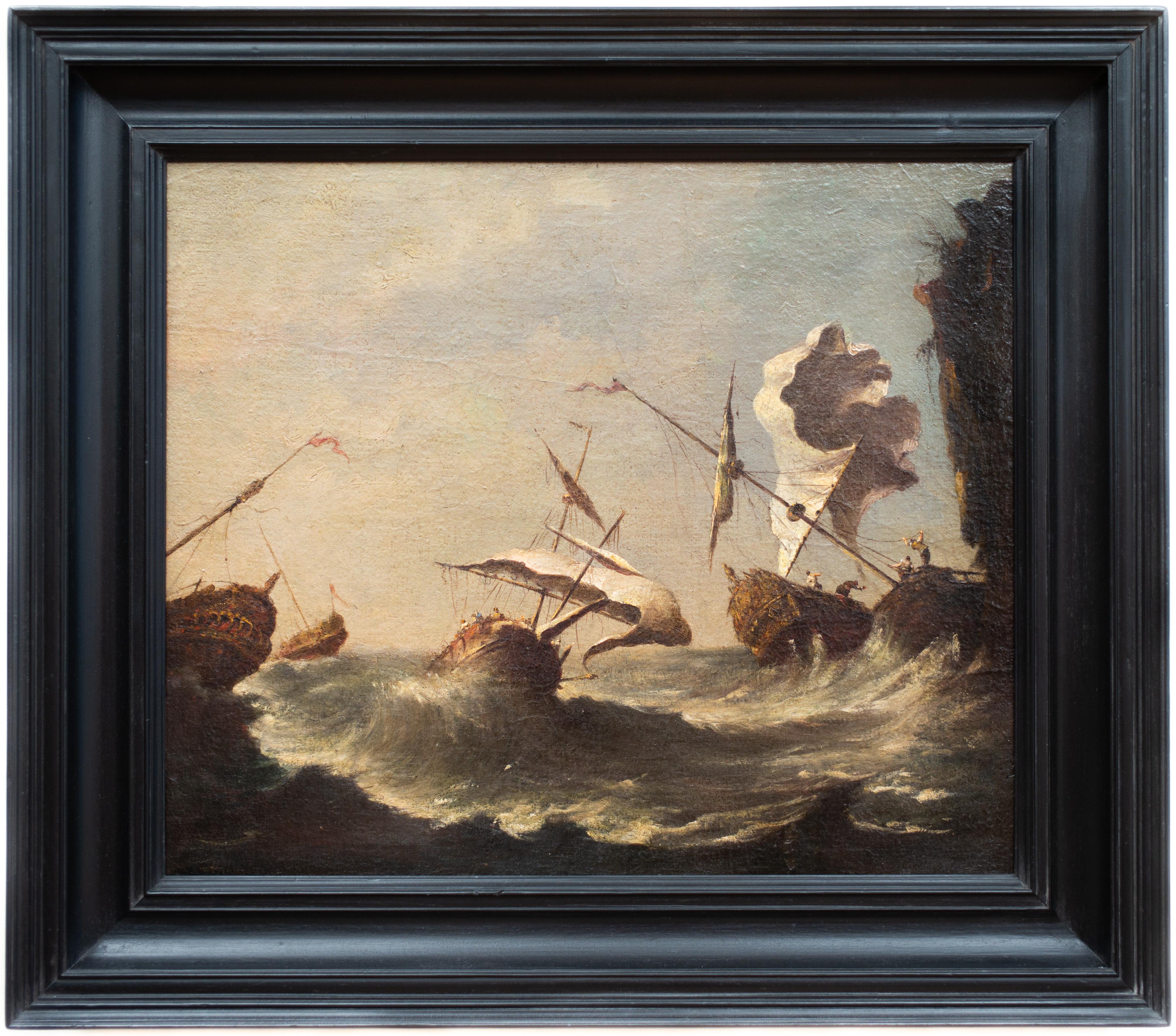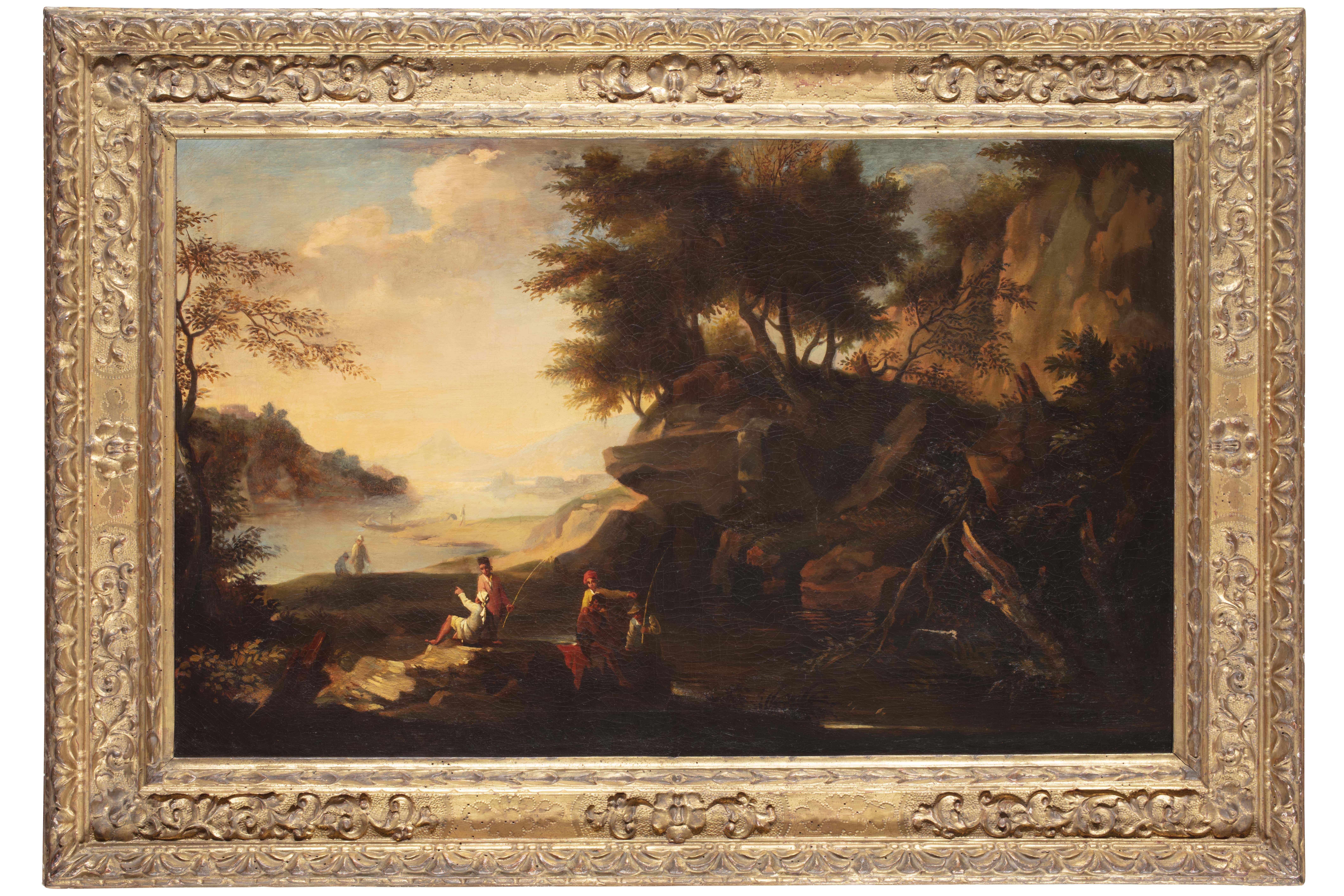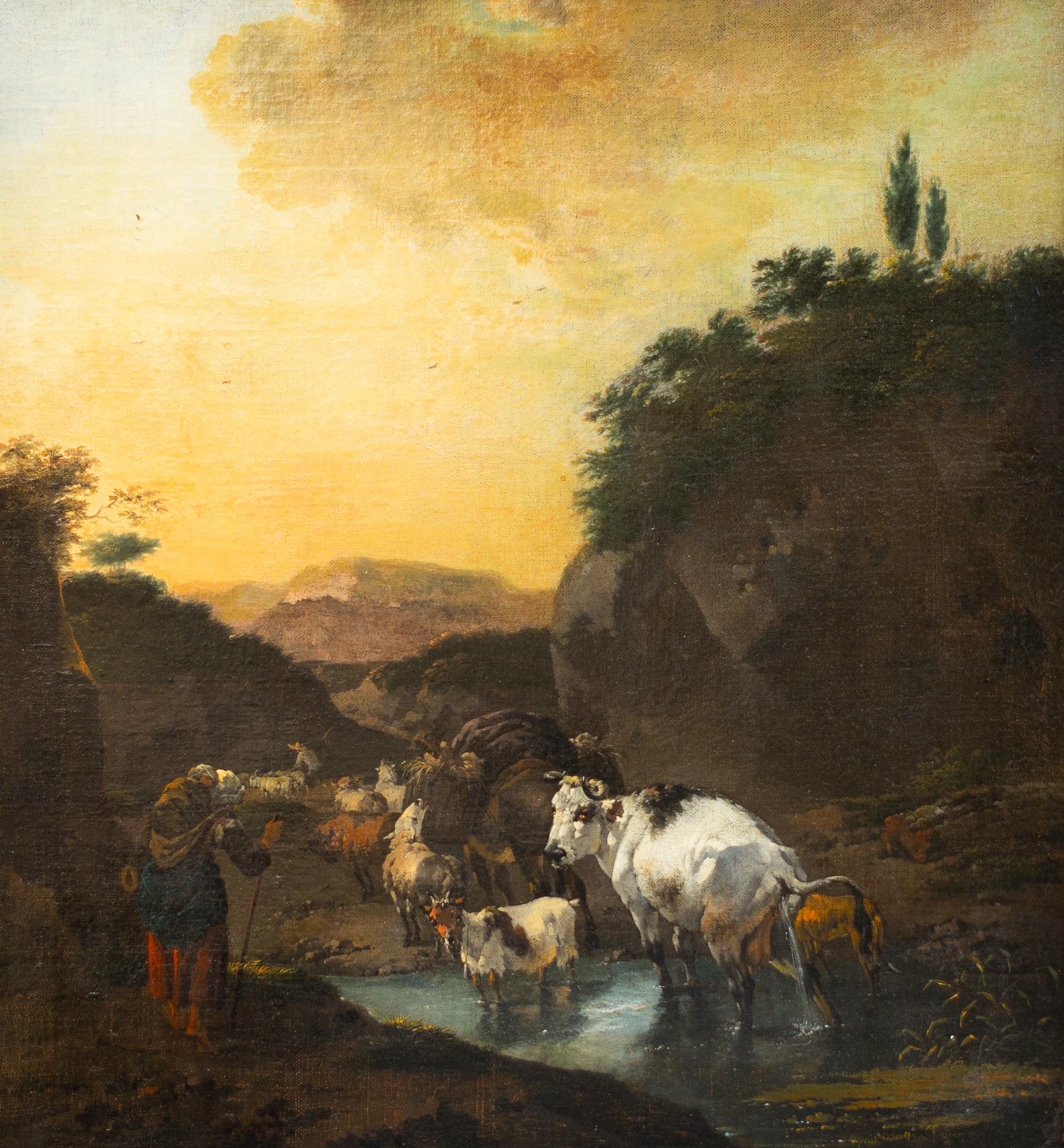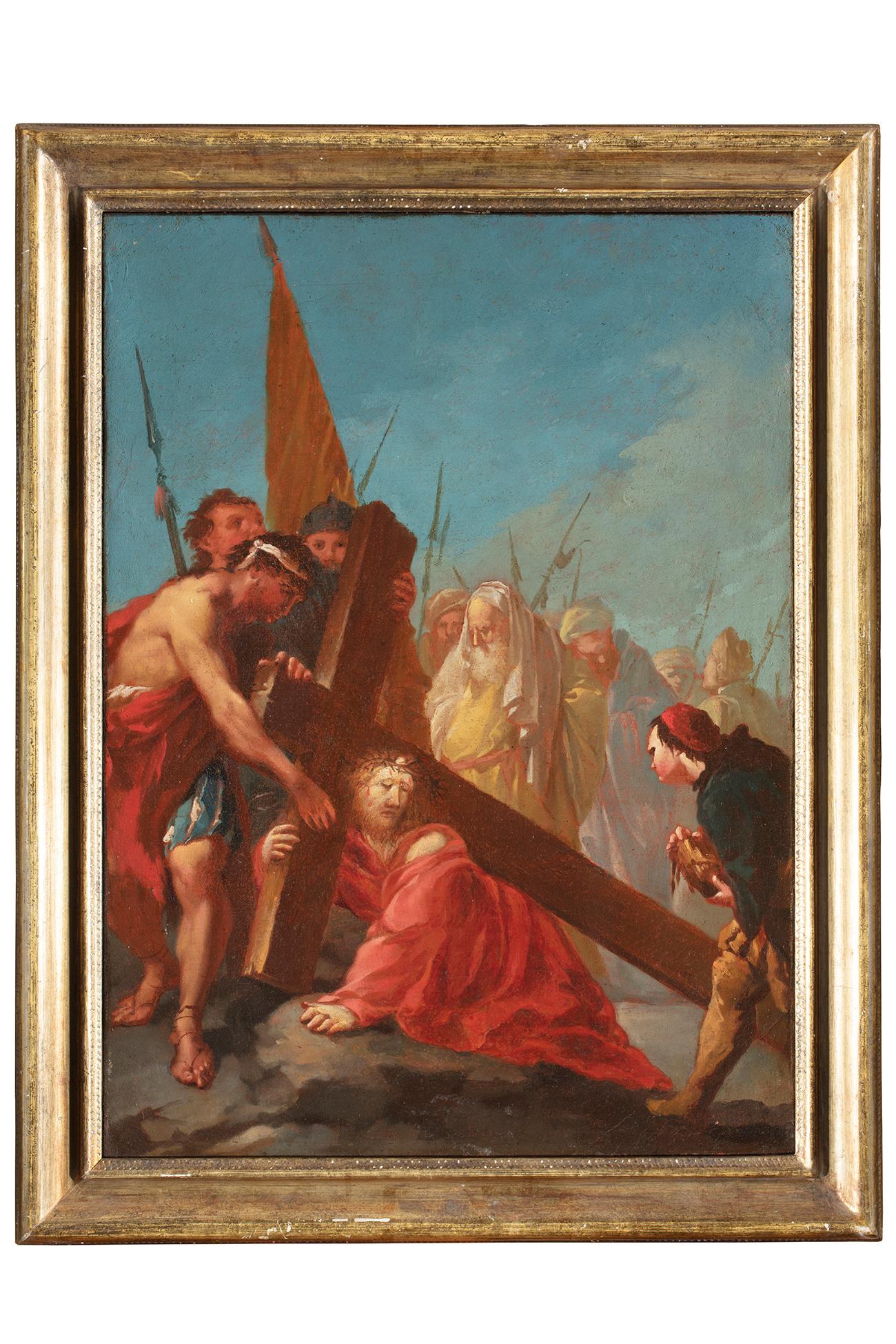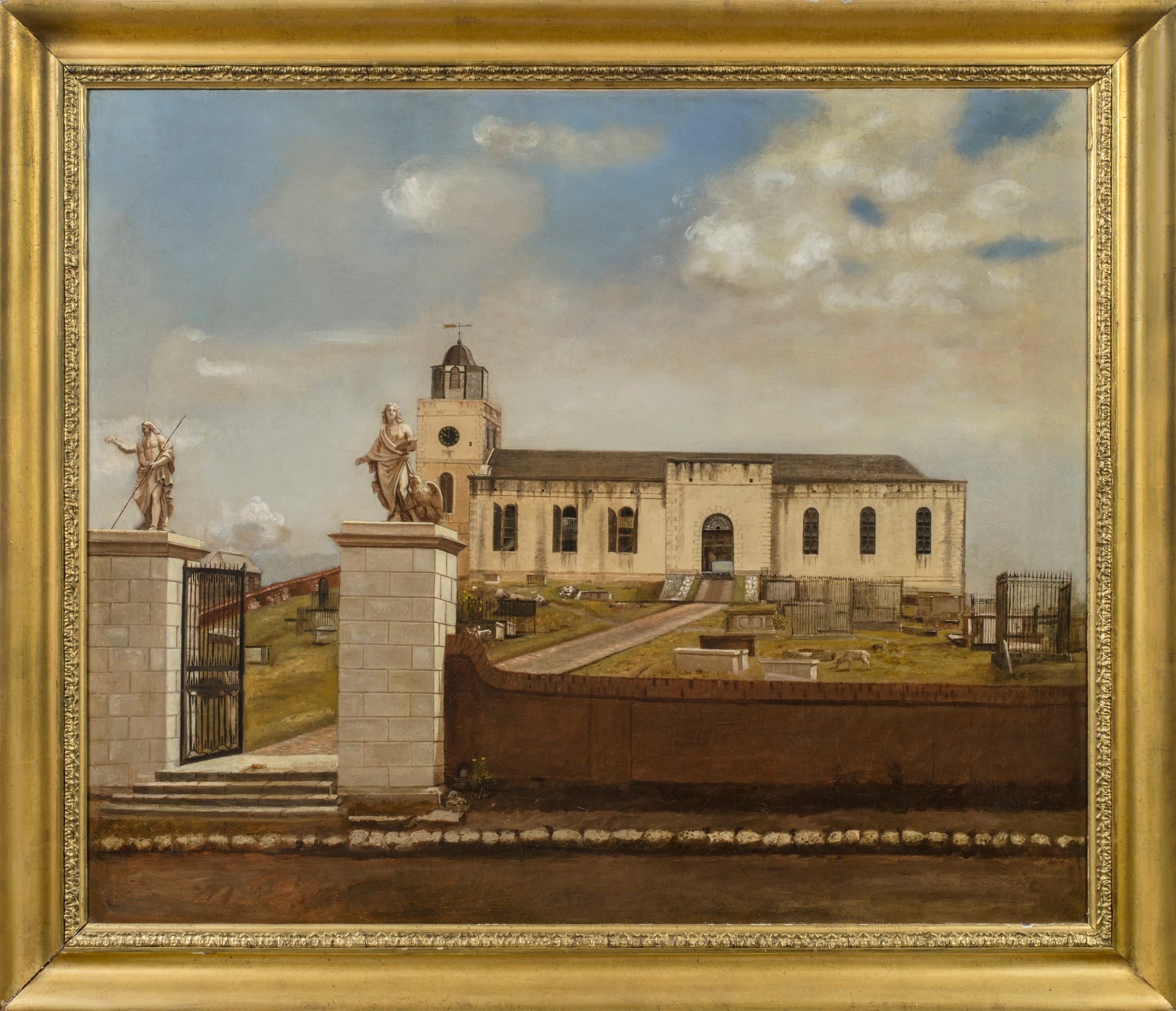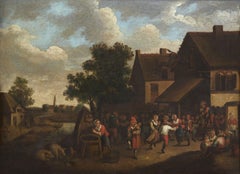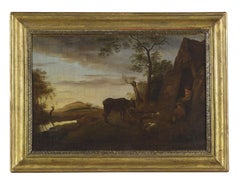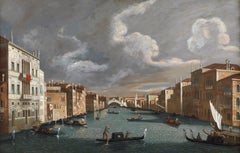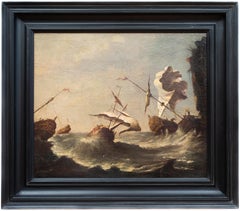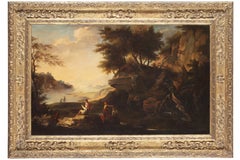Items Similar to 18th Century Galanti Scenes Van Limborch Rest Hunting Oil on Canvas Green Red
Want more images or videos?
Request additional images or videos from the seller
1 of 12
Hendrick van LIMBORCH18th Century Galanti Scenes Van Limborch Rest Hunting Oil on Canvas Green Red
About the Item
Pair of oval paintings measuring 66 x 89 cm without frame and 90 x 115 cm with coeval frame depicting two gallant moments during a rest from hunting by painter Hendrik Van Limborch ( The Hague 1681 - 1759 ).
Beautiful color impact with these light, warm tones that go blending with the peace and tranquility of the rural world.
The main characteristics of Van Limborch's painting are the airy breadth of panoramas and the sense of diffuse brightness where episodes have no precise meaning. They are almost always country pastimes so dear to the 17th century, with the usual characters from the repertoire of the painters of whimsy and views: beggars, Orientals, abbots contemplating ancient tombstones or hunters seeking rest or at work all of course always immersed in nature's unchallenged dominance and symbol of unity between man and life.
The landscape motif even in the most imaginative accents always has in our painter a real cue and therefore a real and human dimension; in these paintings we can see this green so bright and alive that it tries to explain to us how much the nature that is around us and in which we lose ourselves is beautiful, strong, vigorous but at the same time gentle and docile.
Beautiful to note how the two pairs of people are on the one hand busy in their thoughts but at the same time seem lost in the serenity and tranquility of this old-time landscape.
Typical is his construction of the pictorial fabric, and particular is the atmospheric rendering played with the shadowy areas created by the scenic backdrops of trees and clouds.
As is the case in this painting, the perfect composition of the landscape became the main object of his work;
The tree-lined patches executed with free and quick brushstrokes, the warm burnished colors, the atmospheric rendering of the rising cloud mounds, all in a well-balanced composition of his landscapes with an Arcadian pastoral flavor, constitute the most significant elements of his painting, all of which are also well represented in our canvas.
The paintings and art objects published here are my exclusive property and consequently are always available to be viewed in person, by appointment, at my exhibition venues located in San Remo and Brescia.
The work, like any of our items, is sold accompanied by a FIMA photographic certificate of authenticity and lawful provenance; this document identifies the item bringing added value to the item.
We personally handle and organize the packing and shipping of artworks with insurance worldwide.
Dr. Riccardo Moneghini
Storico dell'Arte
- Creator:Hendrick van LIMBORCH (1681 - 1769, Dutch)
- Dimensions:Height: 25.99 in (66 cm)Width: 35.04 in (89 cm)Depth: 1.97 in (5 cm)
- More Editions & Sizes:66 x 89 e con cornice 90 x 115Price: $10,447
- Medium:
- Movement & Style:
- Period:1730-1739
- Condition:
- Gallery Location:Sanremo, IT
- Reference Number:1stDibs: LU1510213736382
About the Seller
5.0
Vetted Professional Seller
Every seller passes strict standards for authenticity and reliability
Established in 2013
1stDibs seller since 2021
6 sales on 1stDibs
- ShippingRetrieving quote...Shipping from: Sanremo, Italy
- Return Policy
Authenticity Guarantee
In the unlikely event there’s an issue with an item’s authenticity, contact us within 1 year for a full refund. DetailsMoney-Back Guarantee
If your item is not as described, is damaged in transit, or does not arrive, contact us within 7 days for a full refund. Details24-Hour Cancellation
You have a 24-hour grace period in which to reconsider your purchase, with no questions asked.Vetted Professional Sellers
Our world-class sellers must adhere to strict standards for service and quality, maintaining the integrity of our listings.Price-Match Guarantee
If you find that a seller listed the same item for a lower price elsewhere, we’ll match it.Trusted Global Delivery
Our best-in-class carrier network provides specialized shipping options worldwide, including custom delivery.More From This Seller
View All18th Century Landscape Flemish Scool Outdoor Peasant Oil on Canvas Brown Blue
Located in Sanremo, IT
Painting oil on canvas measuring 45 x 55 cm without frame and 65 x 75 cm with frame depicting an outdoor peasant scene from the Flemish school of the late 17th and early 18th centur...
Category
1690s Flemish School Landscape Paintings
Materials
Canvas, Oil
18th Century Landscape Flemish School People and Cows Oil on Canvas Green
Located in Sanremo, IT
Flemish painting measuring 44 x 30 cm without frame and 53 x 39 cm with frame depicting a landscape with figures, in soft tones and with a strong sense of perspective; elegant, fluid...
Category
18th Century Flemish School Landscape Paintings
Materials
Canvas, Oil
$2,600 Sale Price
20% Off
18th Century Winter Landscape Flemish School Snow Nature Oil on Canvas White
Located in Sanremo, IT
Painting, oil on canvas, measuring 55 x 35 cm without frame and 66 x 46 cm with a non-coeval frame, initialled at lower left in an unreadable manner, of the Flemish school.
The main...
Category
Late 18th Century Flemish School Landscape Paintings
Materials
Canvas, Oil
18th Century Venice Jacopo Fabris Venice Rialto Bridge Oil on Canvas Blue
Located in Sanremo, IT
Painting oil on canvas measuring 70 x 90 cm without frame and 82 x 102 cm with frame depicting View of the Grand Canal with the Rialto Bridge.
The work under examination depicting a...
Category
Mid-18th Century Italian School Landscape Paintings
Materials
Canvas, Oil
18th Century Landscape Flemish School Nature Oil on Canvas Green White Brown
Located in Sanremo, IT
Painting oil on canvas with dimensions of 110 x 125 without frame and 120 x 135 cm with frame depicting a landscape en plen air case and characters immersed in the nature of the seco...
Category
Late 18th Century Landscape Paintings
Materials
Canvas, Oil
18th Century Earth Allegory Felice Cignani Putti Oil on Canvas Blue Green
Located in Sanremo, IT
Painting with a diameter of 130 cm and 160 x 160 cm with a marvellous frame depicting an 'allegory of the Earth' by the painter Felice Cignani ( Bologna 1660 - 1724 ).
An oil on ca...
Category
Early 18th Century Italian School Figurative Paintings
Materials
Canvas, Oil
You May Also Like
Shipping in Stormy Waters, Attributed to Italian Artist Francesco Guardi
By Francesco Guardi
Located in Stockholm, SE
The splendour of the tragic sea
Francesco Guardi and maritime painting in Venetian art
No Venetian painter was a stranger to the sea. After all, Venice was not only one of the most prominent ports of the Mediterranean, but indeed a city literally submerged in the ocean from time to time. Curiously however, the famous Venetian school of painting showed little interest in maritime motifs, favouring scenes from the iconic architecture of the city rather than seascapes. That is why this painting is a particularly interesting window into not only the painter Francesco Guardi himself – but to the significance of the element of water in art history, in absence as well as in the centre of attention.
Whether it be calm, sunny days with stunning views of the palaces alongside the canals of Venice or – more rarely – stormy shipwrecking tragedies at sea, water as a unifying element is integral to the works of painter Francesco Guardi (1712–1793). During his lifetime, Venetian art saw many of its greatest triumphs with names like Tiepolo or Canaletto gaining international recognition and firmly establishing Venice as one of the most vibrant artistic communities of Europe. While the city itself already in the 18th century was something of an early tourist spot where aristocrats and high society visited on their grand tour or travels, the artists too contributed to the fame and their work spread the image of Venice as the city of romance and leisure to an international audience, many of whom could never visit in person.
Still today, the iconic image of Venice with its whimsical array of palaces, churches and other historic buildings is much influenced by these artists, many of whom have stood the test of time like very well and remain some of the most beloved in all of art history. It was not primarily subtility, intellectual meanings or moral ideals that the Venetian art tried to capture; instead it was the sheer vibrancy of life and the fast-paced city with crumbling palaces and festive people that made this atmosphere so special. Of course, Venice could count painters in most genres among its residents, from portraiture to religious motifs, history painting and much else. Still, it is the Vedutas and views of the city that seems to have etched itself into our memory more than anything else, not least in the tradition of Canaletto who was perhaps the undisputed master of all Venetian painters.
Born into his profession, Francesco lived and breathed painting all his life. His father, the painter Domenico Guardi (1678–1716) died when Francesco was just a small child, yet both he and his brothers Niccolò and Gian Antonio continued in their fathers’ footsteps. The Guardi family belonged to the nobility and originated from the mountainous area of Trentino, not far from the Alps. The brothers worked together on more challenging commissions and supported each other in the manner typical of family workshops or networks of artists. Their sister Maria Cecilia married no other than the artist Giovanni Battista Tiepolo himself, linking the family to the most renowned Venetian name of the time. During almost a decade, Guardi worked in the studio of Michele Giovanni Marieschi, sometimes simply known as Michiel, a painted similar in both style and motif. Canaletto is, however, the artist Guardi is most often compared to since they shared a mutual fascination for depicting the architecture and cityscape of Venice.
During the course of his career, Guardi tried his hand in many different genres. He was as swift in painting landscapes, Vedutas of Venice, sacred motifs, interiors and architectural compositions as he was in a number of other motifs. His style is typical of the Venetian school but also distinct and personal once we look a little closer. There is an absolute certainty in the composition, the choice of which sometimes feels like that of a carefully calculated photograph – yet it is also very painterly, in the best sense of the word: fluid, bold, sensitive and full of character. The brushwork is rapid, intense, seemingly careless and extraordinarily minute at the same time; fresh and planned in a very enjoyable mixture. His interiors often capture the breath-taking spacious glamour of the palaces and all their exquisite decor. He usually constructed the motif through remarkably simple, almost spontaneous yet intuitively precise strokes and shapes. The result was a festive, high-spirited atmospheric quality, far away from the sterile and exact likeness that other painters fell victim to when trying to copy Canaletto.
The painting here has nothing of the city of Venice in it. On the contrary, we seem to be transported far away into the solitary ocean, with no architecture, nothing to hold on to – only the roaring sea and the dangerous cliffs upon which the ships are just moments away from being crushed upon. It is a maritime composition evoking both Flemish and Italian precursors, in the proud tradition of maritime painting that for centuries formed a crucial part of our visual culture.
This genre of painting is today curiously overlooked, compared to how esteemed and meaningful it was when our relationship to the sea was far more natural than it is today. When both people and goods travelled by water, and many nations and cities – Venice among them – depended entirely on sea fare, the existential connection to the ocean was much more natural and integrated into the imagination. The schools and traditions of maritime art are as manifold as there are countries connected to the sea, and all reflect the need to process the dangers and wonders of the ocean.
It could symbolize opportunity, the exciting prospects of a new countries and adventures, prospering trade, beautiful scenery as well as war and tragedy, loss of life, danger and doom. To say that water is ambivalent in nature is an understatement, and these many layers were something that artists explored in the most wondrous ways. Perhaps it takes a bit more time for the modern eye to identify the different nuances and qualities of historic maritime paintings, they may on first impression seem hard to differentiate from each other. But when allowing these motifs to unfold and tell stories of the sea in both fiction and reality – or somewhere in between – we are awarded with an understanding of how the oceans truly built our world.
In Guardi’s interpretation, we see an almost theatrically arranged shipwrecking scene. No less than five ships are depicted right in the moment of utter disaster. Caught in a violent storm, the waves have driven them to a shore of sharp cliffs and if not swallowed by the waves, crushing against the cliffs seems to be the only outcome. The large wooden ships are impressively decorated with elaborate sculpture, and in fact relics already during Guardi’s lifetime. They are in fact typical of Dutch and Flemish 17th century ships, giving us a clue to where he got the inspiration from. Guardi must have seen examples of Flemish maritime art, that made him curious about these particular motifs. One is reminded of Flemish painters like Willem van de Velde and Ludolf Backhuysen, and this very painting has indeed been mistakenly attributed to Matthieu van Plattenberg...
Category
18th Century Old Masters Landscape Paintings
Materials
Canvas, Oil
$46,421 Sale Price
32% Off
Free Shipping
17th Century by Jacob de Heusch Pair of Landscapes Oil on Canvas
Located in Milano, Lombardia
Jacob De Heusch (Utrecht, Netherlands, 1657 – Amsterdam, Netherlands, 1701)
Title: Pair of Landscapes
Medium: Oil on canvas
Dimensions: without frame 50 x 8...
Category
17th Century Old Masters Landscape Paintings
Materials
Canvas, Oil
18th Century Neoclassical Oil Painting of the Trojan War: Briseis & Achilles
By James Thornhill
Located in London, GB
James Thornhill (1674-1735)
Oil on canvas
12 x 14 inches;
16 ½ x 18 ½ in. Inc. frame
The subject matter and inclusion of herms on both sides shows the influence of Louis...
Category
Early 18th Century Old Masters Figurative Paintings
Materials
Oil, Canvas
Shepherd with Sheep, Cows and a Goat in a Landscape by Jan Frans Soolmaker
Located in Stockholm, SE
Jan Frans Soolmaker (Flanders 1635‑1685)
Shepherd with Sheep, Cows and a Goat in a Landscape
oil on relined canvas
canvas size 56 x 53 cm
frame i...
Category
17th Century Old Masters Animal Paintings
Materials
Oil, Canvas
$5,658 Sale Price
25% Off
Free Shipping
18th Century By Giustino Menescardi Ascent to Calvary Oil on Canvas
Located in Milano, Lombardia
Giustino Menescardi (Milan, Italy, c. 1720 - Venice, Italy, after 1779)
Title: Ascent of Calvary
Medium: Oil on canvas
Dimensions: without frame 47 x 36 cm - with frame 57 x 43 cm
Shaped and gilded wooden cassetta frame
Publications:
Bozzetti, modelletti, sketches: dalla collezione di Giorgio Baratti...
Category
Early 18th Century Old Masters Landscape Paintings
Materials
Cotton Canvas, Canvas, Oil
View of St. John’s Cathedral, Antigua
Located in New York, NY
Provenance:
Robert Hollberton, Antigua, ca. 1841
Private Collection, New York
The present painting depicts Old St. John’s Cathedral on the island of Antigua. The church was erected in the 1720s on the designs of the architect Robert Cullen. It measured 130 feet by 50 feet with north and south porches 23 x 20 ½ feet. The tower, 50 feet high with its cupola, was added in 1789. The church was elevated to the status of a cathedral, but disaster struck in the form of an earthquake that destroyed the building on 8 February 1843. A memorandum of that date relates the event:
“On Wednesday, 8th February, 1843, this island was visited by a most terrific and destructive earthquake. At twenty minutes before eleven o’clock in the forenoon, while the bell was ringing for prayers, and the venerable Robert Holberton was in the vestry-room, awaiting the arrival of persons to have their marriage solemnized, before the commencement of the morning service, the whole edifice, from one end to the other, was suddenly and violently agitated. Every one within the church, after the first shock, was compelled to escape for his life. The tower was rent from the top to the bottom; the north dial of the clock precipitated to the ground with a dreadful crash; the east parapet wall of the tower thrown upon the roof of the church; almost the whole of the north-west wall by the north gallery fell out in a mass; the north-east wall was protruded beyond the perpendicular; the altar-piece, the public monument erected to the memory of lord Lavington, and the private monuments, hearing the names of Kelsick, Warner, Otley, and Atkinson, fell down piecemeal inside; a large portion of the top of the east wall fell, and the whole of the south-east wall was precipitated into the churchyard, carrying along with it two of the cast-iron windows, while the other six remained projecting from the walls in which they had been originally inserted; a large pile of heavy cut stones and masses of brick fell down at the south and at the north doors; seven of the large frontpipes of the organ were thrown out by the violence of the shock, and many of the metal and wooden pipes within displaced; the massive basin of the font was tossed from the pedestal on which it rested, and pitched upon the pavement beneath uninjured. Thus, within the space of three minutes, this church was reduced to a pile of crumbling ruins; the walls that were left standing being rent in every part, the main roof only remaining sound, being supported by the hard wood pillars.”
The entrance from the southern side into the cathedral, which was erected in 1789, included two imposing statues, one of Saint John the Divine and the other of Saint John the Baptist in flowing robes. It is said that these statues were confiscated by the British Navy from the French ship HMS Temple in Martinique waters in 1756 during the Seven Years’ War and moved to the church. The statues are still in situ and can be seen today, much as they appeared in Bisbee’s painting, but with the new cathedral in the background (Fig. 1).
Little is known of the career of Ezra Bisbee. He was born in Sag Harbor, New York in 1808 and appears to have had a career as a political cartoonist and a printmaker. His handsome Portrait of President Andrew Jackson is dated 1833, and several political lithographs...
Category
19th Century Old Masters Landscape Paintings
Materials
Oil, Canvas
